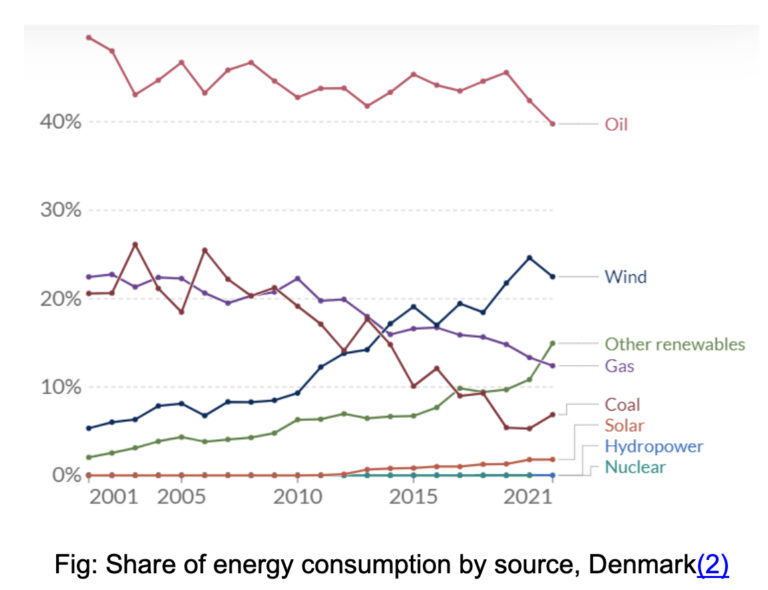As of 2021, 50 percent of electricity in Denmark is supplied by wind and solar power. Wind energy is well-established in Denmark, which long ago decided to put the Danish climate's constant breezes and blusters to practical use. Now Denmark produces almost twice as much wind energy per capita as the runner-up among industrialized countries in the OECD.
The most widely used energy source in Denmark is bioenergy, followed by wind, solar and geothermal energy. More than two-thirds of Denmark's renewable energy comes from bioenergy, which is energy stored in organic material or biomass.
Agriculture is big business in Denmark, and it indirectly helps provide energy too, with manure, animal fats, and straw used as the basis for biogas and liquid biofuels. While biomass is a renewable energy source, its climate impact depends on the type of biomass being used. There is a strong focus on securing sustainable biomass in Denmark.(1)

According to data from ICIS Power Horizon models, excess power generation in Denmark could support production of 3TWh of hydrogen by 2026, rising significantly to 13TWh by 2030, based on a 66 percent system efficiency. By 2030, Germany’s demand is expected to rise to 90-110TWh, according to the German national hydrogen strategy released in 2020. Further, installed electrolysis capacity in Germany is expected to reach 5GW by the end of the decade, with output expected at roughly 14TWh of green hydrogen per year, based on 4,000 full load hours. This means Germany will need to import green or low-carbon hydrogen from other regions to meet growing demand.
According to the technical study released by Gasunie and Energinet, a new hydrogen pipeline infrastructure between Denmark and Germany could export up to 15TWh of green hydrogen produced from Danish offshore wind by 2030(3)

With the Climate agreement for energy and industry in June 2020, the Government reached an agreement with most of the parties of the Folketing to prepare a Danish strategy for Power-to-X (PtX) and utilisation of carbonaceous products (Carbon Capture and Utilisation - CCU). Since then, developments have proceeded at an incredible pace. PtX projects have been announced across all of Denmark, with more on the way. The Government has launched initiatives that can contribute to the promotion of PtX through a number of agreements and proposals
The strategy will push for the production and use of green hydrogen in hard-to-abate sectors like shipping and aviation, as well as heavy road transport and industry. Due to the large wind resources and a massive expansion of offshore wind capacity in the coming years, Denmark has good conditions to produce green hydrogen. The strategy aims to promote energy export in the form of green hydrogen and e-fuels. With the announcement, Denmark aims to build between 4 to 6 gigawatts of electrolysis capacity by 2030. 6 GW will put Denmark amongst Europe’s top three.

The strategy will push for the production and use of green hydrogen in hard-to-abate sectors like shipping and aviation, as well as heavy road transport and industry. Due to the large wind resources and a massive expansion of offshore wind capacity in the coming years, Denmark has good conditions to produce green hydrogen. The strategy aims to promote energy export in the form of green hydrogen and e-fuels. With the announcement, Denmark aims to build between 4 to 6 gigawatts of electrolysis capacity by 2030. 6 GW will put Denmark amongst Europe's top three.
Not Available

Not Available (NA)
Not Available (NA)
Not Available (NA)